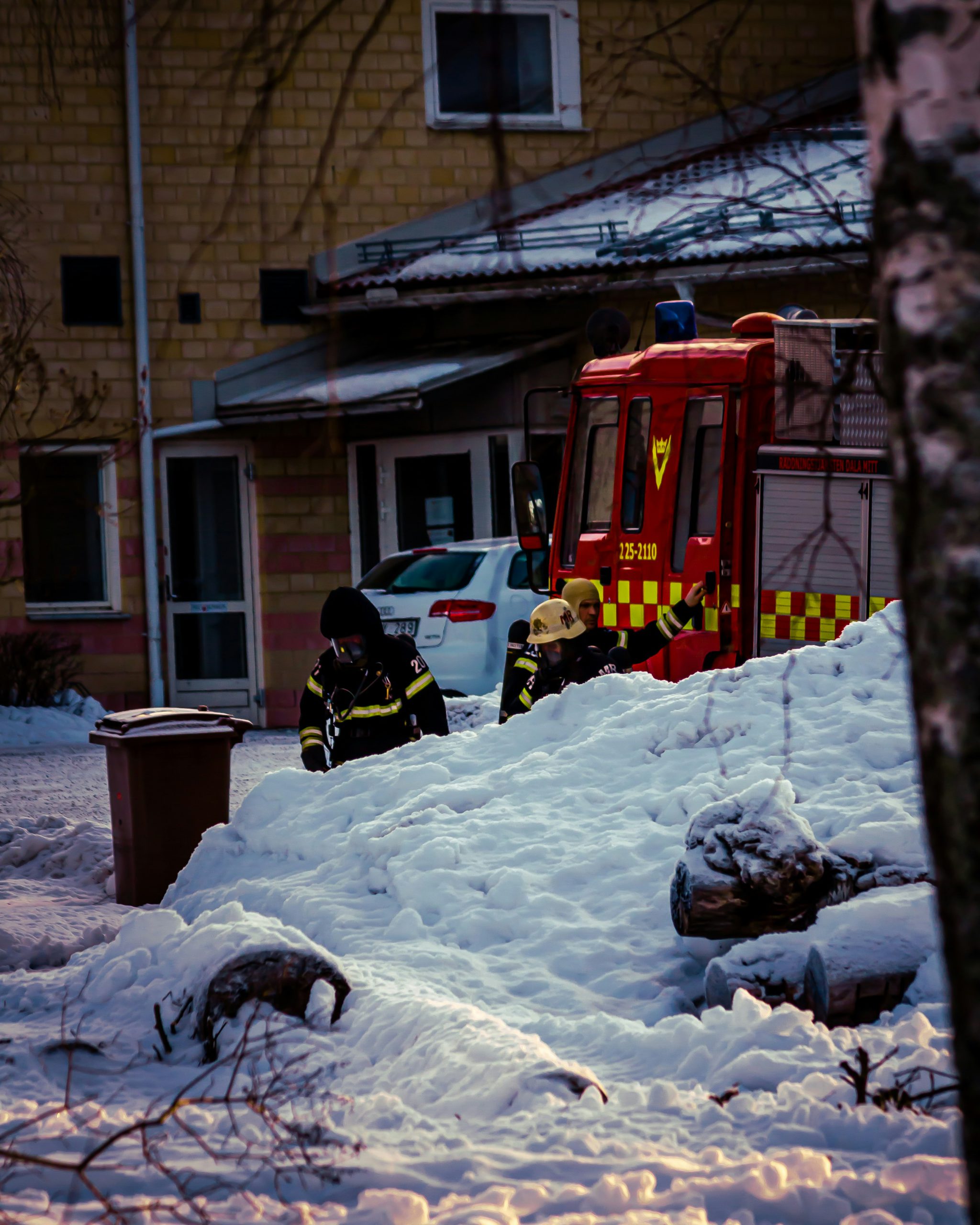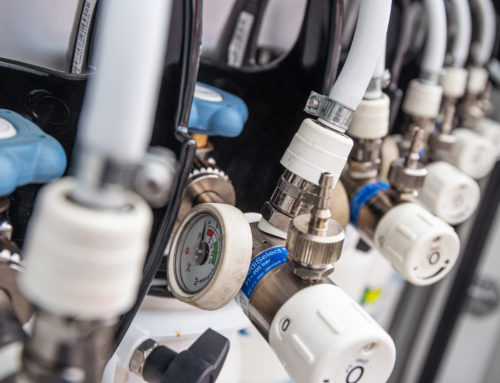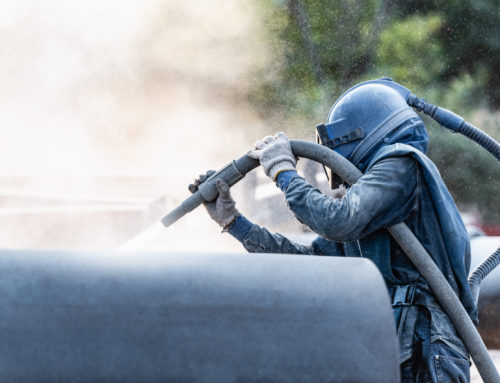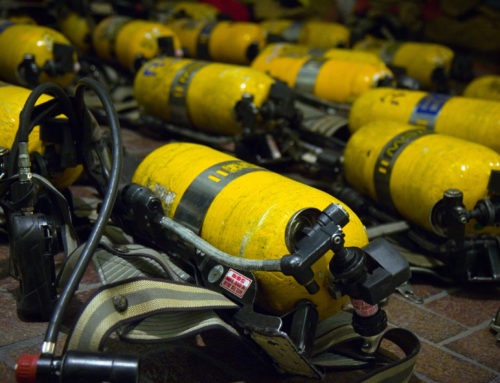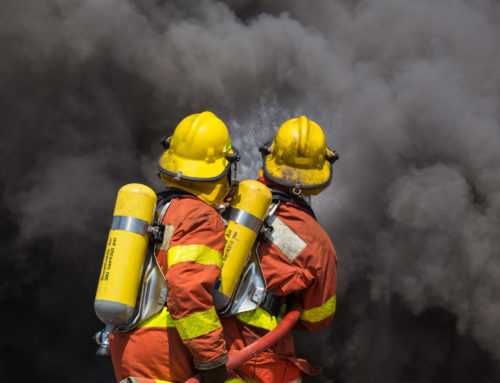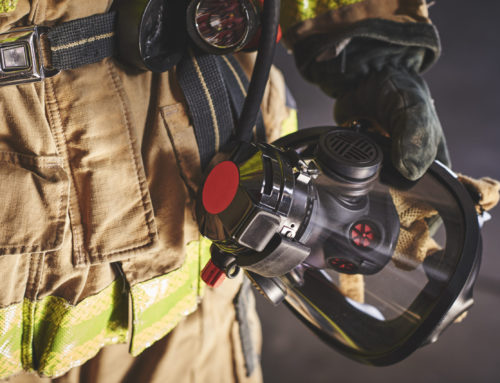During winter, efforts to keep the cold out often lead to an unintended rise in carbon dioxide (CO2) levels indoors. Higher instances of CO2 contamination resulting in air test failures, as per NFPA 1989 standards, are more frequently recorded between November and February than at any other time of the year. Common causes such as poor ventilation, improper air compressor placement, and an increased use of furnace heating will cause these specification failures. Below is a brief discussion on what can be done to prevent these failures.
CO2 Customer Results by Month per NFPA 1989
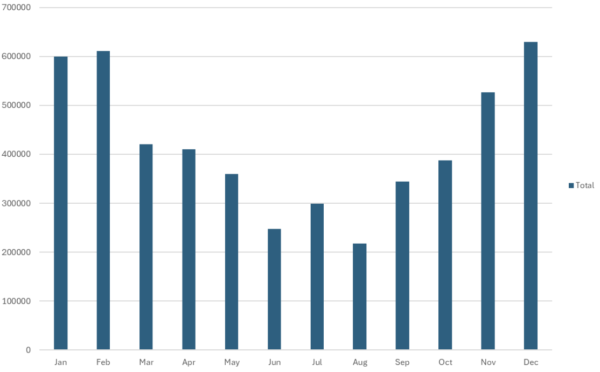
NFPA 1989 standard recommends keeping compressed air CO2 levels below 1000 ppm to prevent mild symptoms like drowsiness and headaches during rescues. On average, the ambient air of our customers following NFPA 1989 guidelines has a CO2 concentration of 474 ppm. Although several factors contribute to rising CO2 levels, monitoring airflow in the fire station’s localized environment can help prevent compounding CO2 issues in compressed air systems.
Improving Indoor Ventilation:
Most modern fire stations are designed with three-zone layouts to contain contaminants. The ventilation system should guide air to flow from cold zones, which have the highest air pressure and least exposure, to hot zones, where contaminants are more prevalent. Whether the station uses active or passive ventilation, steps can be taken to improve airflow and air quality. Active systems typically ensure consistent air quality, but maintenance is critical to keeping CO2 levels within healthy limits to reduce potential compressed air contamination. Regularly check air filters, intakes, and exhausts to ensure proper function and optimal air quality. Make sure air intake comes from a clean area outside. With a passive ventilation setup, manually creating air flow from cold to hot zones can be accomplished by having additional windows open to exchange stale air with fresh air outside a few times per day.
Air Compressor Placement to Reduce CO2 Contamination
Since ambient air is inherently a source of compressed air contamination, a strategic compressor location is paramount for the quality of the SCBA (self-contained breathing apparatus) air quality. Air compressors should be kept in a well-ventilated location in which possible contamination will not accrue. Keep the compressor away from heating systems, fire truck exhaust areas, and places like the janitor’s closet, which are all high risk indoor contaminant sources. Certain heating systems such as gas furnaces produce CO2 as a byproduct. CO2 contamination is commonly produced from truck bay exhaust.
While outdoor placement of air compressors is not ideal, it can be done with care. For example, storing a compressor in a parking lot exposes it to more emissions compared to a location farther from vehicles and other business activities. Though space constraints in fire stations may limit ideal placement, it’s important to remember that the air compressors and cascade system don’t have to be located together. Running a high-pressure hose to the cascade system from another area is also possible, according to Brett Greenlee, Trace Analytics Sales Manager and firefighter.
The best way to ensure your air compressor is set up to produce safe compressed air is by testing your air quality with Trace Analytics. Whether relocating a compressor, performing repairs, or conducting preventative maintenance, regular testing ensures compliance with NFPA 1989 standards and helps fire stations maintain the air quality that protects lives.

